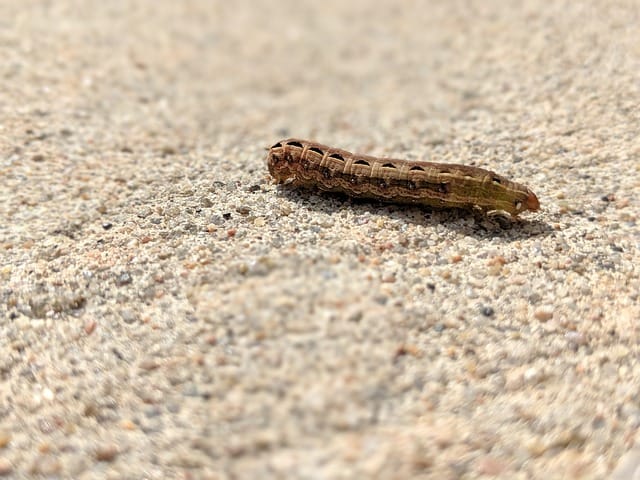Fighting gardening pests: Cutworms
Cutworms are a common garden pest that can cause significant damage to plants

In this article:
- Introduction to Cutworms
- Identification of Cutworms
- Life Cycle of Cutworms
- Common Plants Affected by Cutworms
- Signs of Cutworm Infestation
- Prevention and Cultural Control of Cutworms
- Organic Methods to Control Cutworms
- Chemical Control Options for Cutworms
- Natural Predators of Cutworms
- Crop Rotation Strategies
- Importance of Proper Garden Clean-Up
- Monitoring and Early Detection of Cutworms
- Integrated Pest Management (IPM) for Cutworms
- Dos and Don'ts for Fighting Cutworms
- Frequently Asked Questions about Cutworms
- Conclusion and Final Tips for Managing Cutworms
Introduction to Cutworms
Cutworms are a common garden pest that can cause significant damage to plants. Understanding their lifecycle and implementing effective control strategies is essential for maintaining a healthy garden.
Identification of Cutworms
Cutworms are caterpillars that can vary in color and size depending on the species. They are usually gray, brown, or black and have smooth bodies with few markings.
Life Cycle of Cutworms
Cutworms go through a complete metamorphosis, which includes the egg, larval, pupal, and adult stages. They typically overwinter as pupae or larvae in the soil.
Common Plants Affected by Cutworms
Cutworms feed on a variety of plants, including vegetables, herbs, and ornamental flowers. Some of the most commonly affected plants include tomatoes, peppers, cabbage, and petunias.
Signs of Cutworm Infestation
Signs of cutworm infestation include plants suddenly wilting or collapsing at the base. Cutworms often chew through the stem of the plant, which can cause it to topple over.
Prevention and Cultural Control of Cutworms
Implementing preventive measures, such as cleaning garden debris and using physical barriers like collars around plants, can help reduce cutworm infestations. Cultural practices like crop rotation and deep tilling can also disrupt their life cycle.
Organic Methods to Control Cutworms
Organic control methods include introducing natural enemies like beneficial nematodes and birds, handpicking cutworms, and using botanical insecticides derived from plants.
Chemical Control Options for Cutworms
If organic methods are ineffective, chemical control options can be used. These include insecticides containing active ingredients like carbaryl or spinosad, which should be applied according to label instructions.
Natural Predators of Cutworms
Cutworms have several natural predators that can help control their population. These include birds, ground beetles, parasitic wasps, and predatory stinkbugs.
Crop Rotation Strategies
Rotating crops is an effective strategy to minimize cutworm populations. By moving susceptible plants to new locations each year, you can disrupt their life cycle and reduce the likelihood of infestations.
Importance of Proper Garden Clean-Up
Thoroughly cleaning the garden at the end of the growing season can help prevent cutworms. Removing plant debris and tilling the soil can disturb overwintering larvae and expose them to predators and environmental conditions.
Monitoring and Early Detection of Cutworms
Regularly inspecting plants for cutworm damage and signs of feeding can help with early detection. Monitoring can be done by handpicking cutworms at night or using pheromone traps.
Integrated Pest Management (IPM) for Cutworms
Adopting an integrated pest management approach is crucial for effective cutworm control. This involves combining various control methods and regularly evaluating their effectiveness to minimize damage.
Dos and Don'ts for Fighting Cutworms
There are certain dos and don'ts to keep in mind when dealing with cutworms. For example, do use physical barriers, do encourage natural predators, don't rely solely on chemical insecticides.
Frequently Asked Questions about Cutworms
Q: How long do cutworms usually stay in the larval stage? A: Cutworms generally stay in the larval stage for about 4 to 6 weeks. However, this can vary depending on environmental conditions and species.
Q: Can cutworms fly? A: No, cutworms cannot fly. They are non-flying larvae of certain moth species.
Conclusion and Final Tips for Managing Cutworms
Managing cutworms requires a multi-faceted approach that includes preventive measures, monitoring, and various control methods. By properly identifying and understanding cutworms, you can effectively protect your garden from their damage and ensure the health of your plants.
